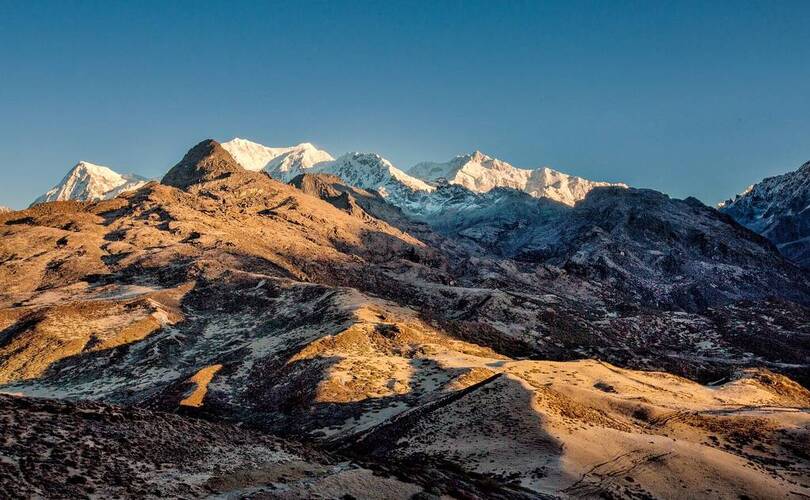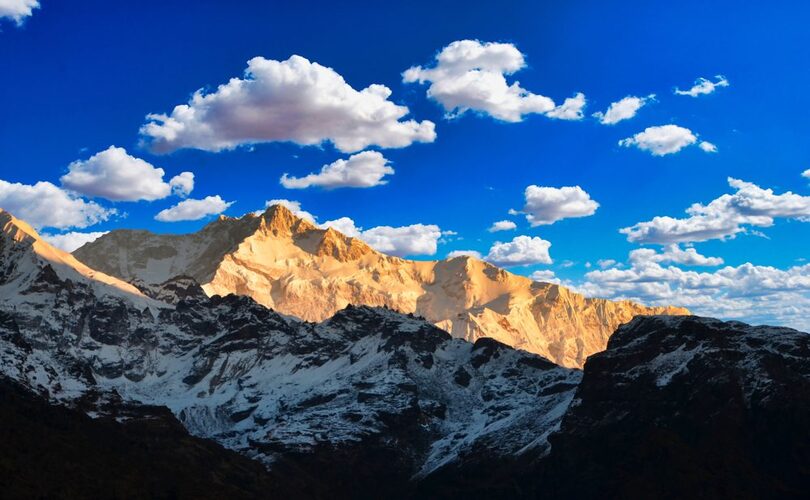Khangchendzonga National Park
Khangchendzonga National Park In Sikkim, India
Khangchendzonga National Park, also known as Kanchenjunga Biosphere Reserve, is a breathtaking natural sanctuary located in the state of Sikkim, India, and is a UNESCO World Heritage Site recognized for both its natural and cultural significance. Spanning an area of 1,784 square kilometers, it is the largest national park in Sikkim and is named after Mount Kanchenjunga, the third-highest peak in the world, which stands majestically at 8,586 meters.
The park’s terrain is a mesmerizing mix of rugged high-altitude landscapes, glaciers, alpine meadows, and dense forests, creating an ecosystem that supports a vast range of flora and fauna. The Zemu Glacier, one of the largest in the Eastern Himalayas, is a major highlight of the park, contributing to the region’s pristine water sources and ecological balance. Due to its varying altitudes, the park boasts an incredible biodiversity, with temperate forests at lower elevations featuring oak, fir, maple, and rhododendron trees, while the upper reaches are dominated by alpine meadows and snow-covered peaks.
The wildlife in Khangchendzonga National Park is equally diverse, with iconic species such as the elusive snow leopard, red panda, Himalayan black bear, clouded leopard, and blue sheep thriving in its protected habitat. Birdwatchers can also marvel at the presence of exotic avian species like the blood pheasant, Himalayan monal, Tibetan snowcock, and satyr tragopan, among many others.
Apart from its ecological significance, the park holds deep cultural and spiritual importance for the indigenous Lepcha and Bhutia communities, who consider the Kanchenjunga mountain sacred and believe in the legend of “Beyul,” a hidden spiritual paradise in Tibetan Buddhism. Several monasteries, sacred lakes, and pilgrimage sites, such as Gurudongmar Lake and Yuksom, further highlight the park’s spiritual legacy.
Adventure enthusiasts are drawn to the park for its renowned trekking routes, including the Goecha La Trek, which offers stunning views of Kanchenjunga, the Dzongri Trek for a shorter but equally rewarding journey, and the challenging Green Lake Trek that leads to a pristine glacial lake.
Strict conservation efforts are in place within the Khangchendzonga Biosphere Reserve to preserve the fragile ecosystem, ensuring minimal human impact while allowing visitors to experience the untouched beauty of the Himalayas. With its unparalleled landscapes, diverse wildlife, and deep-rooted cultural significance, Khangchendzonga National Park remains a must-visit destination for nature lovers, trekkers, and those seeking spiritual tranquility amidst the grandeur of the Eastern Himalayas.
Flora And Fauna
- Musk Deer
- Snow Leopard
How To Reach
Safari Timing
Best Time To Visit
The best time to visit Khangchendzonga National Park is March to May, when the weather is pleasant, and the rhododendrons are in full bloom.
Copyright © 2025 National Park in India. All Rights Reserved


